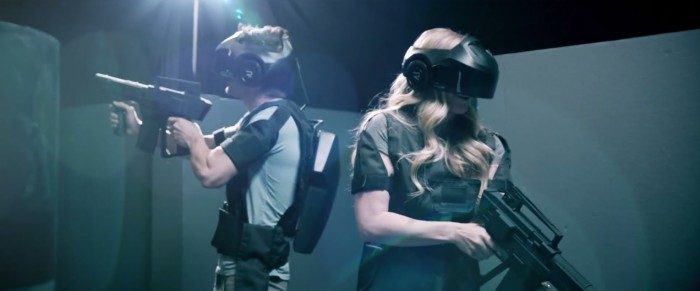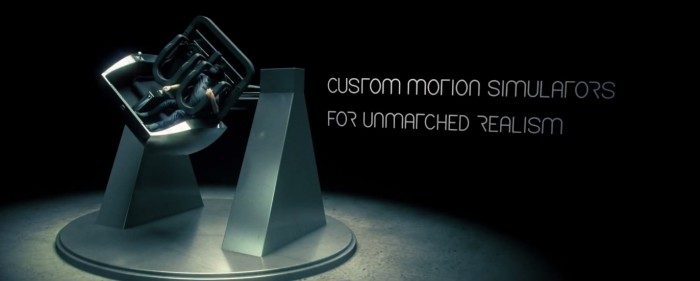Whilst the the virtual reality industry’s focus right now is largely on in-home entertainment, the out-of-home VR sector shows immense promise. A new project called ‘The Void‘ is an out-of-home experience that aims to let players explore physical environments in virtual reality. Confused? Let us explain.
VRCade and Survios are two leading names in the field of out-of-home, physical virtual reality entertainment experiences that promise to deliver both physical and mental immersion by allowing the player to roam (relatively) freely around a virtual environment using a physical space. In the case of those two systems, player position and movements are tracked in a room-scale arena (albeit a potentially large one) with the world around the player described predominantly through virtual reality. Physical interaction however is limited to the holding of peripherals such as weapon; players don’t reach out and touch objects in the real world.
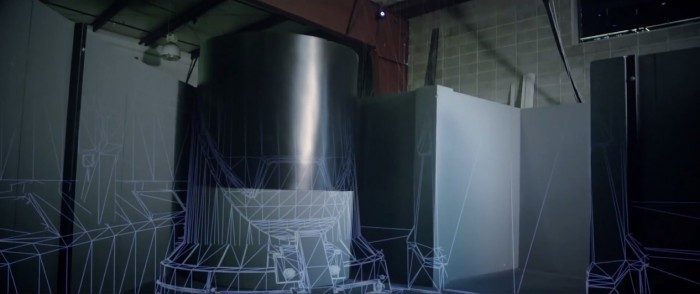
The Void is a new startup based in Salt Lake City, Utah which claims to have gone some way in bridging the gap between physical and virtual worlds by building physical stages which match the virtual environment, then putting players inside.
The venture aims to provide Virtual Entertainment Centres (VECs) where people will go and immerse themselves in custom-built arenas (Gaming Pods), wearing untethered virtual reality headsets. The key differentiator for The Void is the use of specially constructed physical ‘stages’ which mirrors to some extent the physical shape of the virtual world that players experience. That is, turn a corner in virtual reality and you’ll need to do so inside the physical environment, reach out to press a virtual button and the physical representation of that button should exist in the real world.
The system combines proprietary virtual reality headset technology, powered by a player-worn ‘backtop’ (a laptop in a backpack), room-scale tracking with input provided by virtual reality gloves with extra immersion added courtesy of a haptic vest.
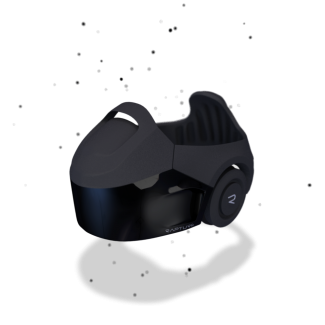
The ‘Rapture HMD’, being a proprietary unit not destined for a low retail price point, supposedly frees The Void’s creators to work with much less hardware restrictions. That is, the company can throw money at the VR headset, lavishing expensive component options upon it without fear of a retail rebuke—at least this is what is claimed. “…we are able to push the boundaries of what is possible with visuals, audio and tracking” reads the promotional material. The claimed initial specs for the Rapture HMD are:
- Dual High-Density Curved OLED Displays (1080p per-eye, initially)
- Quantum Dots (nearly doubling perceived resolution color range)
- Custom Optics (proprietary lens-in-lens design)
- High-Quality THX Headphones (featuring in-game binaural sound design)
- Super-Gain Inline Microphones (for in-game communications)
- Proprietary Global Head Tracking Sensors (running at 120Hz)
In particular, the use of curved OLED panels is very interesting. Although not explicitly stated, such panels have long been touted as a way to increase a VR headset’s maximum field-of-view by curving the display around the player’s peripheral vision. It’s a potentially effective solution, as long as optical and distortion artifacts inherent in this approach can be overcome—which may not be a small feat. It’s good to at least see lip service paid to binaural audio here, the technique used to simulate how the brain perceives and extrapolates three dimensional audio in a space. Precise audio sound-stages will likely be crucial to these sort of trans-environmental experiences in order to sell the illusion to participants.
Of course, money alone does not a compelling VR headset make. Expertise in the fields of optics, tracking, and headset design is not easy to come by, so the team behind the device needs to be as capable as possible. The company claims that the VR headset is under continual R&D, essential for The Void to continue to provide a cutting-edge experience in the fast moving world of VR technology.
Players will also don a ‘Rapture Vest’, a haptic feedback device which the team claims to allow every virtual interaction to “…have its own hit point…” on the vest. This means that, if the virtual world touches you in some way, you should feel it. Vests such as this are not new of course. A Road to VR article from 2013 details the ambitious ARAIG (As Real as it Gets) ‘gaming impact vest’ which used multiple haptic generators to give approximate positional feedback. It’s an area of virtual reality which is as yet almost entirely untapped, but which holds an important key to physical and mental immersion in VR. However, devices such as the KOR-FX prove that providing a compelling solution isn’t necessarily straightforward.
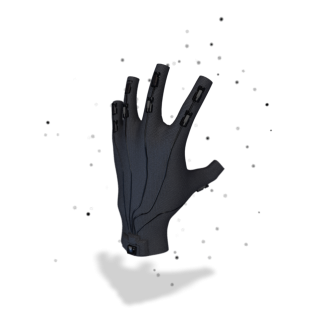
The Void will also offer up input in the form of player-worn gloves, which the company claims will enable players to interact with the virtual environment, allowing them to press buttons and pick up objects much as they would do in real life. Details on this, as with everything else, are light at this stage and it’s another area which as yet doesn’t have a proven solution in the commercial world. Projects such as Control VR, who had stellar success via Kickstarter last year, show great promise but exhibit problems which are not yet resolved. Not least of which include techniques to track your hands in a virtual 3D space.
With players entering ‘The Void’ being placed within specially constructed ‘stages’ (or Gaming Pods as the company calls them) and allowed to apparently move freely around the space, the question of tracking arises. The company claims to be able to offer “… the ability to track natural human body movement at an extremely accurate 1:1 ratio…,” although quite how this is achieved is as yet unclear. Systems like VRCade use a mixture of technologies ripped from the world of hollywood optical motion capture VFX and more mundane inertial IMUs to provide a full body tracking environment, it’s likely The Void will adopt a similar approach. However challenges remain such as line of sight (for mo-cap cameras) in these potentially tight ‘Gaming Pods’.
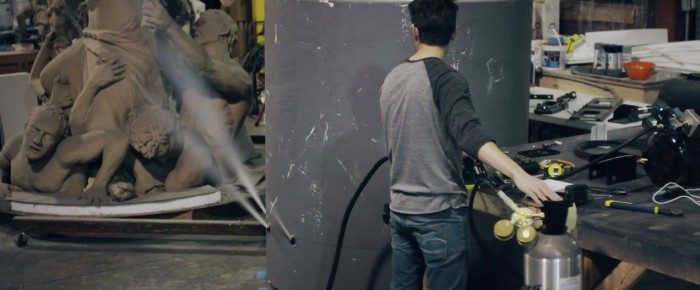
The company is also working on smaller scale, Motion Simulators, which aim to provide a more traditional theme park style ‘sit in’ model, with up to two players wearing VR headsets and potentially “… swappable control devices providing for a variety of simulation experiences …” such as aircraft-dogfights, ground-transport, mech battles etc. This seems like an effort to make The Void more attractive to smaller scale venues not able to adopt the space required for the full ‘Gaming Pods’ free-roaming experience.
The company claims to have been working in secret now for some time, with significant sums being invested in the technology behind the experience. We’ve been in touch with the outfit for a few weeks leading up to today’s launch, and as a result Chris Madsen, Road to VR’s Community Liaison has had a chance to try an early version of The Void for himself. We’ll be bringing you more hands-on detail from his experience out in Utah a little later, but suffice to say that he was suitably impressed with what he saw.
There are some questions surrounding the technology behind The Void, which we’ll endeavour to answer in due course, but there’s no doubt the system looks to offer a genuine progression in the field of out-of-home entertainment and free-roaming virtual reality.


